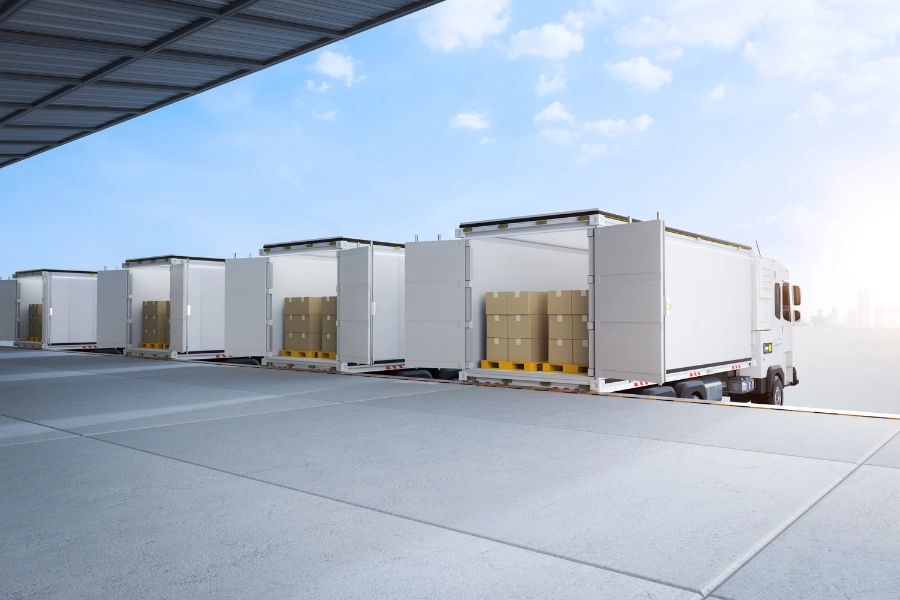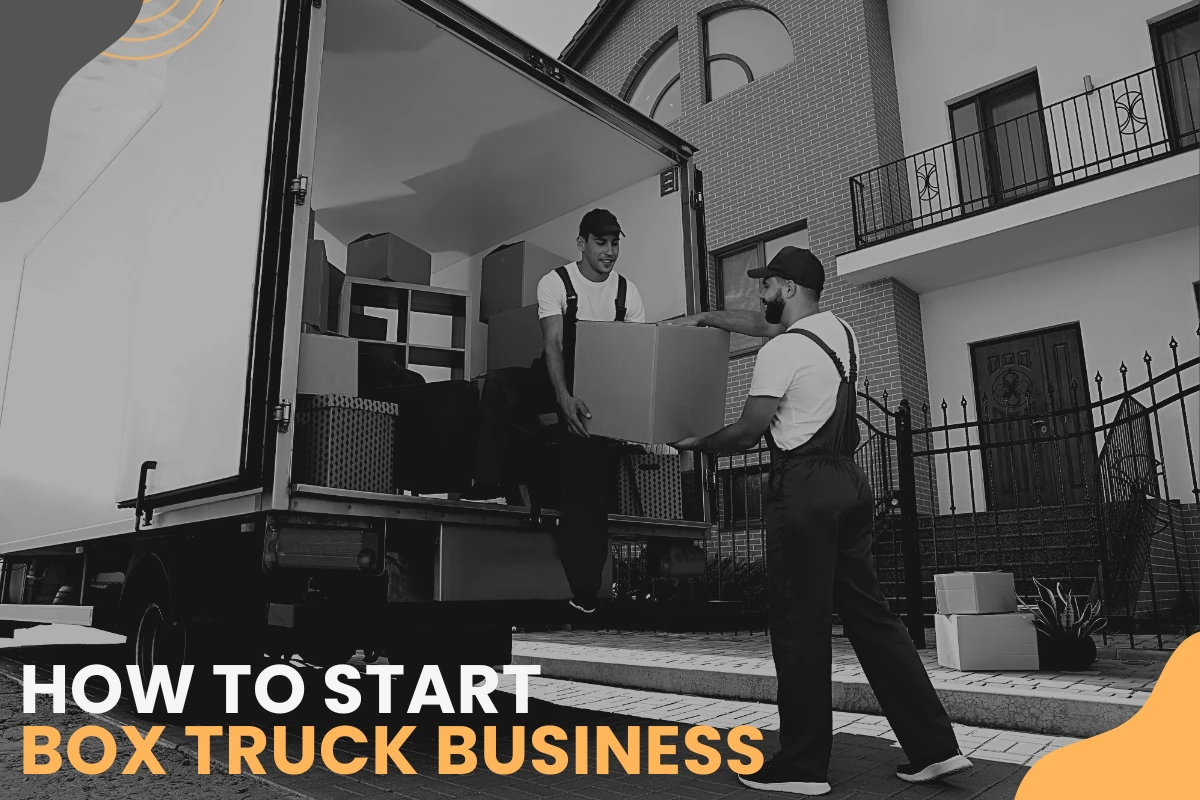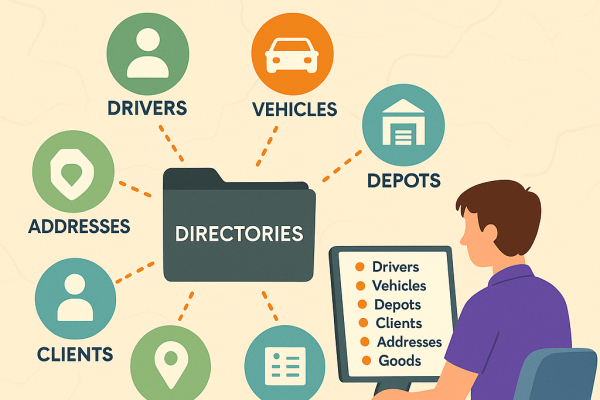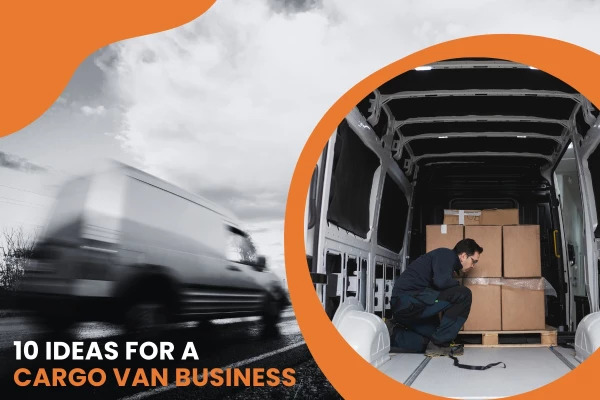- Industries
- Best Practices
How to Start Box Truck Business

by
Mike Foster
March 06, 2024
A box truck is an all-in-one chassis and cab solution for your delivery business, with an enclosed cargo area in the shape of a box. The cargo area is usually separate from the cab of the truck, although sometimes there may be a door in between.
The benefits of running a business with box trucks:
- In terms of size, box trucks are somewhere in between a cargo van and a tractor-trailer, perfect for small to medium-sized deliveries.
- You don’t need a commercial driver’s license (CDL) to drive a box truck, which means a minimum of fuss when starting out.
- Because of their fixed chassis, box trucks are comfortable to drive and reasonably easy to maneuver in heavy traffic and urban streets.
- Box trucks offer three blank sides for you to place your advertisements.
- Your cargo is protected from the elements and secured behind locked doors.
- Purchasing a box truck will cost considerably less than the traditional semi trucks, fuel and fleet maintenance costs are also less.
Once you have decided on a box truck that is suitable for your business, you need to make sure that you comply with the various business and licensing regulations. You will also need to draw up a business plan, as discussed below
The first step is to register your business with the IRS. You will need to provide your company name and address and the type of business you intend to start, for example, courier company or furniture removal.
Familiarise yourself with the laws regarding your drivers. You will need to know about standard working hours, rest times, overtime hours, and wages. We give some pointers on insuring your drivers below. You will need to ensure that your drivers have had adequate training and be aware that training is an ongoing exercise.
Understanding your box truck business
Box trucks offer cargo security and are not excessively expensive to buy or run, making them a good choice for when you start a box truck business. They are flexible in terms of the type of cargo that you can carry and allow you to cater to a wide range of clients in local markets and further afield.

Begin by assessing the types of businesses in your area and establishing whether they have a need for delivery services. Ascertain who the competition is and what services they offer—there may be a gap that you can fill.
Here are some ideas for your box truck business:
Removal company: furniture removals are always in demand, whether home or office. You will need labor to help with the carrying as well. You could expand this business and offer packing services too, and if you supply the packaging, it becomes even more lucrative. Be sure to mention in your advertisements that your box truck will keep its furniture dry and safe.
Courier company: according to Statistisches Bundesamt, 7 out of 10 internet users shopped online in 2023. Companies that offer online shopping often use courier companies for their deliveries, and with these statistics, the courier business is booming. Build relationships with the various e-commerce companies in your area and get a contract to deliver their goods for them.
Retail deliveries: many retailers, such as furniture stores, have large items for sale but do not offer a delivery service. You can build relationships with some of these stores, and they will recommend your services to clients who need to transport their purchases.
Junk removals: removing garden refuse, clearing away building sites, and helping people get rid of accumulated junk are services that crop up from time to time.
You can turn your box truck into a business that offers services, such as a food truck or a mobile grooming parlor for pets or people. You would have to kit your vehicle out with the necessary equipment, including a water tank and heating facilities. There are regulations around operating a business from a truck, and you would also have to find out what rules are in place regarding the transportation of your truck once it has been modified.
Planning your box truck business
The next step in the process is to design your business plan. The first requirement, always, is a business plan.
Consider it a forced discipline that makes you think of everything you could possibly need for your business. You will be surprised at your creativity when you start putting it all into a format that will convince someone else that they need to finance you or do business with you.
If you’re not sure where to start or want help structuring everything, you can use PlanPros, an AI business plan generator, to quickly draft and organize your ideas into a professional format.
You may also need to convince yourself! Set aside substantial time to work on this—it’s not a five-minute exercise. Here are some guidelines for your business plan:
1. Executive summary: describe your business in one sentence. You can elaborate later, but a description that accurately summarises your business in one sentence is more likely to make an impact than a paragraph that goes into too much detail. Now that you have defined your business, you can add the following information:
- The market sector that you plan on servicing, including the size of the market and their needs.
- What makes your business unique?
2. Company analysis: give details of the key players in the company, their past accomplishments, and what experience they have that will benefit your business.

3. Give a detailed analysis of the industry you will be operating in: the size of the market and the market trends. Quote your sources and give as much detail as possible.
4. Customer analysis: You should have a good knowledge of your customer base: who they are, their geographical locations, their needs, and how you can help them. Be realistic about your limitations in meeting needs, such as volumes. Your ability to meet customers’ needs, given that you have a one-vehicle fleet, is not going to impress prospective financiers if you overestimate your delivery capacity.
5. Competitive analysis: Which companies are in competition with your proposed business, where are they, how much of a threat are they, and why? Competitive analysis should include your analysis of the competitive dilemma regarding competition law and fair trade. Be open about your research methods don’t make false claims regarding your expertise, and don’t be disparaging about your competition.
6. Your marketing plan: Be sure about what services you are going to offer and how you will advertise them. Mention your strategies for how you will find customers and how you plan to retain them. Provide a detailed price list.
- Short-term operations plan: Give details of your daily operational procedures. What are your plans regarding computer systems and other tools that will help you optimize your operations, for example, how to plan your delivery routes and how you intend to track your vehicles, if applicable?
- Long-term operations plan: Give your milestones regarding achievements and profits in 5-year, 10-year, and 20-year periods.
- Financial plan: Give details of your funding sources and anticipated revenue sources and include your pro-forma financial statements. Validate your projections and assumptions. Detail your expected use of funds.
Attach all documentation.
Before attending to the legalities, you need to think about your intended business model. Do you want to operate on your own, or do you plan to take on a partner? Consider contracting your services to other companies so that you carry the least responsibility possible for a business startup.
Your checklist of legal requirements and regulations
Familiarise yourself with the legal requirements that apply in the country in which you are going to operate, as well as in any other countries you intend to do business in. Many countries don’t require a commercial driver's license (CDL) for box truck drivers, but this may not apply to your country, so do your homework before starting out.
Whatever the regulations, we provide you with our starting a non CDL box truck business checklist:
1. Register with the IRS. Decide upfront what kind of business you want to run, and then familiarise yourself with your country’s laws. To simplify it, your best options when starting out will possibly be:
- A sole proprietorship if you are planning on going it alone.
- A limited liability company may be a better option, as it will enable you to expand your business when the time is right and take on partners.
Check with a tax consultant before you register, as it will be costly if you change your mind further down the line.
2. Register as a business with the relevant government department. Know what type of business you want to run, and have your business name and address ready.
3. License your vehicle, and make sure your drivers have a license.
4. Insurance: Ensure your insurance policy covers vehicle damage, cargo insurance, third-party liability, and public liability. You may need to insure your premises as well.
If you employ drivers, you will need workmen’s compensation and accident cover for yourself and your drivers.
5. Set up a bank account.
6. Consider employing someone to handle your finances and taxes.
In most countries, you can operate a non CDL box truck that weighs less than 26,000 pounds gross vehicle weight, but you should check the specific regulations in your country so that you don’t have to pay additional money for CDL licenses.
Acquiring your box truck
Before deciding on the specifications for your box truck, you will need to have a clear idea of what type of cargo you want to transport. Budget may also be a consideration here. If you have a limited budget, you may have to start with a small truck, which will limit the type of cargo you can move in terms of size and weight.
Other considerations may be refrigeration and loading facilities.
In your search for a suitable non CDL box truck for your business, look at the second-hand market as well. You could pick up a used box truck in reasonable condition and with low mileage at a good price. This will save you some money and help you get your business up and running faster.
Consider the following non CDL box truck requirements:
- Financing fees: Would it be more viable to lease a vehicle to start with?
- Licensing fees. These may vary according to the size and weight of your vehicle.
- The cost of any modifications you may need to make.
Whether you buy new or second-hand, have an idea of the mileage you will be doing with the vehicle, as this will affect your decision regarding vehicle size and fuel efficiency.
Make sure you have sufficient space in your vehicle and extra space in anticipation of when you are able to expand your business.
Strategies for optimizing your operations and keeping track of costs
One of the most important strategies for running a successful box truck business is cost control. By optimizing efficiency and keeping track of your daily costs, you can see what you are spending money on, where you can cut down, and where you can improve efficiency.
The importance of cost control cannot be stressed enough. Keep track of your costs every day. Know how much you are spending on fuel per vehicle. If one of your vehicles is costing more than the rest in terms of fuel, get it checked out. If your drivers leave the truck idling for too long, fuel costs will be affected.

This process is ongoing, even when your business is established and successful. Never take your eye off the operating efficiency of your company.
Another way to improve operating efficiency is to keep track of your trucks and carefully plan their routes. It helps to know whether they are honoring the planned routes and whether customers receive their goods on time.
Finding the shortest route between two points and planning a delivery schedule that works out the most efficient route by considering all drop-off locations is critical to saving fuel costs and wear and tear on your trucks. This also prevents driver fatigue and keeps your customers happy, as you are in a better position to give them a reasonably accurate ETA for their goods.
Track-POD offers a sophisticated last mile delivery system incorporating route planning and vehicle tracking features. Track-POD’s Delivery Driver’s app enables communication to take place between dispatchers, drivers, and customers, thereby giving your customers a real-time delivery experience that ensures satisfaction and the likelihood of continued business.
Speaking of customer satisfaction, Girteka Logistics’ 3PL segment managed to reduce customer calls by 80% due to installing the Track-POD order tracking system with real-time PODs. The system is easy for drivers to use and has meant a 60-70% increase in staff productivity.

One of the most critical assets in this business is your customers, and by giving them access to track their orders, you provide them with peace of mind and convenience. It’s worth considering software that pays for itself time and again in terms of goodwill.
Marketing your box truck business
Here is your chance to be creative as you decide on a name for your business and an eye-catching logo. Design something simple but striking to catch people’s attention.
Bear in mind that by including words such as ‘logistics,’ ‘couriers,’ or ‘deliveries’ in your name, your business is more likely to pop up in search engines and will be easier to notice and remember when your trucks are driving around with your name and logo printed on the sides.
If you are unfamiliar with marketing strategies, this side of the business may seem daunting, but it is a necessary part of business. If your budget allows a consultation with a marketing company, do it. This is also a chance for you to use your social media skills.
It pays to network, so get online and let friends and family know what you are up to.
The word will get out, and you will make some valuable contacts. Facebook is one of the most vital advertising mediums today, so get yourself acquainted with their rules and regulations and start your digital advertising campaign today. There are some helpful tutorials online to get you going. It costs nothing to begin with, and you can upgrade to include additional features—the choice is yours.
Enjoy the ride!
To sum it all up, when starting a box truck business, you will need a truck, an original name, and a good knowledge of your potential customers and how you can service their needs. You will also need cash in the bank and someone to help you manage it.
There’s plenty of opportunity for transport companies today as e-commerce escalates and larger companies outsource their logistics to specialists in the field. You can start small with a box truck or two and grow your business with some good advertising and research, smart route planning, and excellent customer care.
About The Author
Mike Foster
A dynamic writer whose passion for technology and Software as a Service (SaaS) is the driving force behind his compelling work.









